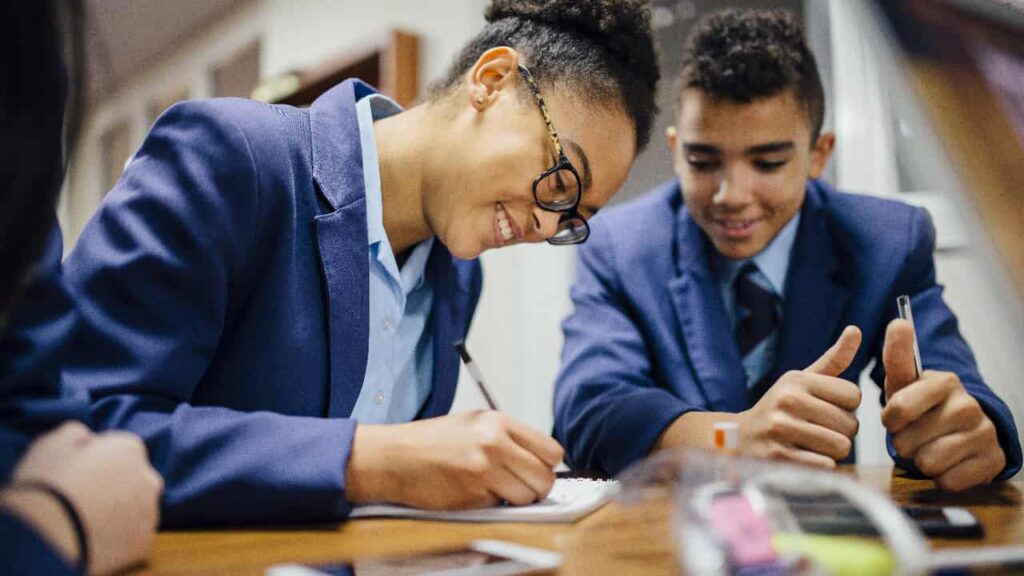Every child’s journey through education comes with its unique challenges. From the lingering echoes of distressing experiences at home to the unsettling tremors of community upheaval, these young hearts are not untouched by these experiences. “The term ‘trauma’ is used to describe these experiences, and as Bessel Van de Kolk identified, “Long after a traumatic event is over it may be reactivated at the slightest hint of danger and mobilise brain circuits and secrete massive amounts of stress hormones” (*Van de Kolk, 2014).
Traumatic events become hard-wired into the brain and because these types of memories are processed differently they can then cause survival-type behaviours. These are often called fight, flight, freeze, fawn or flop and various mental health issues for the children, such as anxiety and depression to name a few.
What is trauma and how does it affect mental health?
Trauma is an overwhelming and distressing experience that can have lasting emotional and psychological effects. For children, trauma refers to experiences that exceed their ability to cope and integrate associated emotions, such as abuse, neglect, violence, accidents, or loss. In the UK one in three children and young people are exposed to at least one potentially traumatic event by the time they are 18.
Children may exhibit fear, anxiety, anger, confusion, and helplessness, along with symptoms like nightmares, hyper-vigilance, avoidance, regression, and difficulties in concentration and relationships. Most children who have experienced adversity in their early years struggle with emotional regulation in educational settings.
The impact of trauma varies, but recognising and addressing it through nurturing relationships and trauma-focused interventions can help children heal, build resilience, and thrive in school despite challenging behaviour triggered by their survival responses. In this article, we want to raise awareness of trauma-informed practices in schools and how teachers and staff can best support their students during traumatic times.

Key principles of trauma-informed practice
There are 6 key principles of trauma-informed practice:
1. Safety:
Prioritise the physical, psychological, and emotional safety of both children and staff. Ensure there is a sense of safety, prevent re-traumatisation, and implement policies to safeguard children involved.
2. Trustworthiness:
Build trust through transparency in policies and procedures. Follow through on promises to establish trust among staff, students, and the community.
3. Choice:
Support children of any age in making decisions and setting goals to build resilience. Ensure their voices are heard in decision-making, provide clear choices, and acknowledge the challenges young people with trauma might face in trusting relationships.
4. Collaboration:
Recognise the value of both staff and student experiences. Foster collaboration through peer support, involving children, families and staff in decision-making, and actively working together to make improvements.
5. Empowerment:
Share power and give students and staff a strong voice in decision-making at individual and organisational levels. Validate feelings and concerns, listen to their needs, and provide support for making decisions and taking action.
6. Cultural Consideration:
Recognise and respect the cultural backgrounds of individuals, taking into account how their experiences and values may influence their responses to trauma.
These principles collectively act as a guide to trauma-informed practice, aiming to create a supportive and respectful environment for students who have experienced trauma.
What is trauma-informed practice in schools UK
Trauma-informed practice in schools in the UK refers to an approach that recognises the potential impact of trauma on students’ learning, behaviour, and overall well-being. This approach involves creating a safe and supportive environment that takes into consideration the experiences of students who may have faced various forms of trauma, such as abuse, neglect, family disruptions, or other adverse events.
The goal of trauma-informed practice in schools is to minimise re-traumatisation, reduce barriers to learning, and promote the overall well-being of students who have experienced trauma. This approach can lead to improved student behavior, academic performance, and mental health outcomes, while also fostering a compassionate and inclusive school community.

How can Trauma-Informed Practices Support Children and Young People?
One way that schools have begun to approach this is through Trauma-Informed Practice. This has been defined as an approach ‘which is grounded in the understanding that trauma exposure can impact an individual’s neurological, biological, psychological and social development’ (Gov, 2022).
The aim of an approach based on the principles of Trauma Informed Practice is to provide a calm, consistent experience where staff and students know how triggers can cause a response. Alongside this it is important to minimise triggers while also teaching how to manage their responses.
Working with your school community of staff, pupils and their families is vital in the implementation of this approach as some of the practices will look very different to a traditional approach. All involved need to understand that behaviour is communication and that often that communication is about unresolved trauma rather than intentional disruption.
For particular children or young people who have experienced trauma, it gives them the opportunity to overcome trauma and build their resilience.
How Can Teachers Identify Trauma in a Child Experiencing Adverse Childhood Experiences (known as ACEs)
Children experiencing Adverse childhood experiences (known as ACEs), and pupils who have suffered trauma in their early years, are the most vulnerable children and require additional support from school staff. Ideally, this team have received adequate training to provide support to these children and young people with this type of background.
Teachers and staff can identify trauma in a child and vulnerable groups through several key observations and behaviours. While these signs may vary depending on the child and their experiences, here’s a brief summary of how teachers can identify trauma in individual children:
Here are some ways teachers can recognise and support these students:
1. Behavioural Changes/Challenging Behaviour:
When a once-engaged student becomes uncharacteristically withdrawn or displays sudden aggression, consider it a potential sign of underlying trauma.
2. Academic Decline:
If you notice a student’s academic performance takes an unexpected nosedive, it might be an indicator of emotional struggles stemming from trauma.
3. Emotional Dysregulation:
Frequent mood swings, extreme reactions, or outbursts could signal emotional turmoil that needs a trauma-informed response.
4. Social Withdrawal:
A student avoiding peers and struggling to form relationships might be struggling with trust issues related to trauma.
5. Physical Symptoms:
Keep an eye out for unexplained physical complaints, like headaches or stomachaches, which might be manifestations of underlying emotional distress.

How Can Teachers Support Children with Trauma
Teachers can support students with trauma in the classroom by creating a safe and secure environment where students feel emotionally and physically protected. Building strong, trusting relationships with students is crucial, as it helps them feel understood and valued. Being mindful of potential triggers and avoiding potentially triggering topics or situations is important. Offering choices in learning activities empowers students and restores a sense of control.
Clear communication, flexible approaches to assignments, and a structured classroom routine help reduce anxiety. Sensory strategies such as fidget tools and calming corners can aid emotional regulation. Teachers should collaborate with support staff, educate themselves about trauma effects, and encourage peer support. Additionally, self-care is vital for teachers to manage the emotional demands of supporting students with trauma effectively.
Promoting a Positive Mental Health in the Classroom
For those children who suffer from mental health problems a whole school community approach to emotional wellbeing is needed in order to support these pupils. Staff may undertake appropriate training and the school should commit to ongoing whole-school training.
We are now seeing emotional health being prioritised within school environments. Building positive relationships between students and teachers is key to supporting vulnerable schoolchildren who have trauma mental health and attachment issues.
To conclude, by recognising the signs of trauma and adopting principles that prioritise understanding and supporting pupils, educators can create an environment for support and growth. To find out more we invite you to join our trauma-informed course. Written by our guest expert Debbie Innes-Turnill, you can gain practical tips and dive deeper into strategies. Let’s take these transformative steps together and create a brighter, more resilient educational future. Why not focus on trauma-informed practice as our course of the month now and be a driving force in shaping classrooms where every student thrive?
References:
- Van der Kolk (2014) The body keeps the score (p2)
- Working definition of trauma-informed practice (Gov, 2022) https://www.gov.uk/government/publications/working-definition-of-trauma-informed-practice/working-definition-of-trauma-informed-practice
Don’t forget to check out our ‘After The Bell’ podcast, which you can listen to on a weekly basis on Spotify or Apple Podcasts.
If you would like any more information, please do not hesitate to contact us by email at [email protected] or call 01253 543 660.

